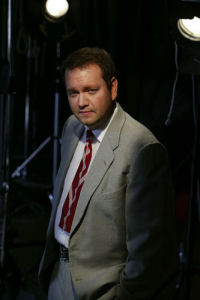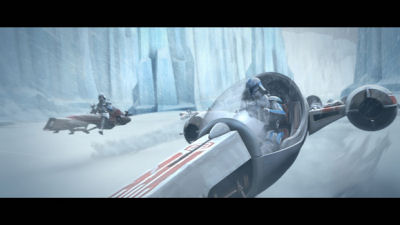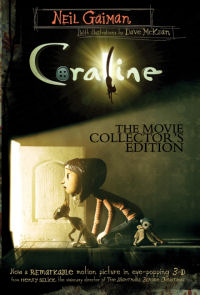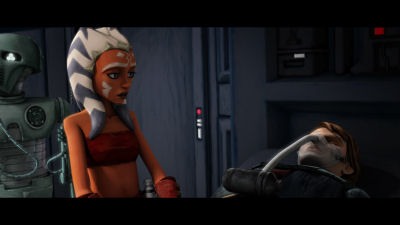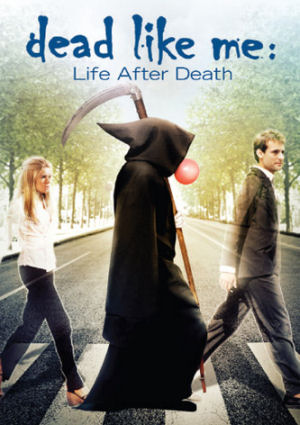
Bryan Fuller is a genius. A self-professed Star Trek geek, he was such a huge Star Trek: Deep Space Nine fan that he set out to write for Star Trek. Because he had the talent and imagination to match the desire, he made his dream come true. When DS9 came to an end, he ended up working on Star Trek: Voyager but he felt restricted in his writing because the syndicated format prevented deep multi-episodic story arcs and he longed to write more emotional depth into his characters. During his tenure with Star Trek, this desire drove him to write Dead Like Me, which he quickly sold as a pilot. Dead Like Me is a deeply emotional and sometimes disturbing fantasy (what could be referred to as Urban Mythology) full of layered, ongoing storylines and flawed people.
I first saw Dead Like Me in reruns on SCI FI channel. I loved the story, the characters and the macabre events and how they entwined and unfolded to tell a very solid and entertaining story. I was disappointed to learn that it wasn’t getting picked up for a third season, another blow to sci-fi and fantasy fans like me who had just dealt with the loss of Stargate SG-1. In hopes of not only supporting the show (and praying maybe SCI FI would pick up a Season 3 if there was enough fan interest), I bought the DVD box sets. I was surprised when I watched them because of the mature content that I was seeing for the first time, some of which seemed to distract from the story for me. (The producing network Show Time is notorious for this though, even forcing Stargate SG-1 to put nudity in its premiere episode, something that has never been done since without harming its success as it went on to show for ten seasons before making its move back to direct to DVD films in 2008.)
While Bryan went on to other projects soon after production on Dead Like Me began, the show went on to gain a cult following that is still begging for more several years later.
Dead Like Me follows the life and after-life of smart mouthed and deeply antagonistic Georgia “George” Lass. Disillusioned with life at a very young age, she has estranged herself from her mother (whom she loves to offend and annoy) and her sister (who worships her but is virtually invisible to George) as her father drifts emotionally further away from the family. At the age of 18, her philosophy is basically that bad things happen to you whether you are a good or bad person, so why bother to be anything special. While drifting listlessly through life, feeling no particular desire or value for it, she suddenly loses it when struck by a toilet seat that fails to burn up during reentry from a de-orbiting Russian space station. Moments after her death, she meets Rube. He’s a Grim Reaper and the team leader of a group of Reapers. He explains to her that taking souls is a public service of the afterlife and, until her time comes to “go into the light”, she, too, will now have to fulfill that public duty. Reluctant and rebellious as always, George struggles with her new reality while trying to come to terms with the life she left behind and the new afterlife she’s facing.
In Life After Death, we catch up with George five years after her death. While she seems to have finally grown up and come to terms with her afterlife, suddenly everything changes again. It’s great to see a return of so many familiar faces. Rube, their no-nonsense team leader who hands out their daily assignments on yellow Post-its each morning at breakfast at Das Waffle Hause has gone missing and is replaced with a new leader who has a completely different approach to running the business of death; Roxi, the tough-as-nails cop and former dancer who was strangled in the 80s by an overly ambitious friend who wanted to steal her invention that would later go on to become an icon of a generation; Mason, a young man whose ambition in life to remain on a constant drug-induced high led him to drill a hole in his own head, seeking euphoria; Daisey, the Hollywood starlet-wanna-be who “died tragically in a fire on the set of Gone with the Wind“. While dealing with this new set of changes, George is suddenly confronted with her old life once again when she unexpectedly crosses paths with her mother, Joy, and sister, Reggie.
Once again, the show is heavily laden with examination of the themes of life, death, love, family, ambition, temptation and a myriad other conditions of being human. For anyone who loved Dead Like Me, Life After Death will not disappoint. It is full of the same dark humor and wit that made the television series hugely entertaining. While Rube’s presence is sadly missed, they handled the absence well and the plot allows for it to stand alone or springboard into a new series or series of movies.
The Life After Death DVD is available for pre-order on Amazon.com with a release date of February 17, 2009. Also available on February 17, and available for pre-order, is Dead Like Me: The Complete Collection, which includes all of Season 1 and Season 2 in one box set.
Other Bryan Fuller productions I highly recommend are Wonderfalls, Heroes and Pushing Daises.
